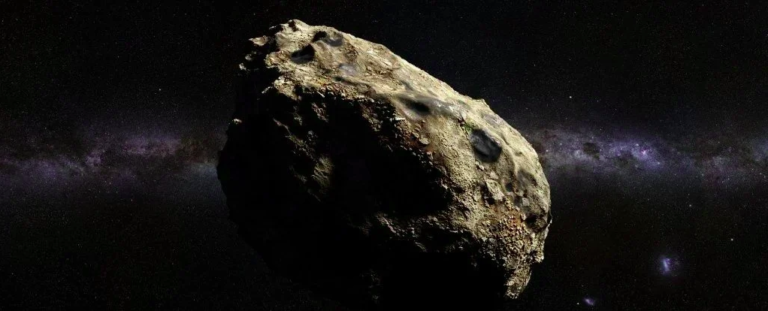The Largest Asteroid to Go Past Earth This Year Is Coming Our Way Right Now
An enormous asteroid four times the size of the Empire State Building will make a close approach to Earth on May 27, according to NASA’s Center for Near Earth Object Studies (CNEOS).
Fear not: the asteroid, named 7335 (1989 JA), will soundly miss our planet by about 2.5 million miles (4 million kilometers) – or nearly 10 times the average distance between Earth and the Moon.
Still, given the space rock’s enormous size (1.1 miles, or 1.8 km, in diameter) and relatively close proximity to Earth, NASA has classified the asteroid as “potentially hazardous”, meaning it could do enormous damage to our planet if its orbit ever changes and the rock impacts Earth.
According to NASA, 7335 (1989 JA) is the largest asteroid that will make a close approach to Earth this year. Scientists estimate the asteroid is traveling at about 47,200 mph (76,000 km/h), or 20 times faster than a speeding bullet.
The rock won’t make another close flyby until June 23, 2055, when it will pass even farther away than this flyby, or within about 70 times the distance between Earth and the Moon.
This asteroid is one of more than 29,000 near-Earth objects (NEOs) that NASA tracks each year. NEOs refer to any astronomical object that passes within about 30 million miles (48 million km) of Earth’s orbit, according to NASA.
A majority of these objects are extremely small; 7335 (1989 JA) measures larger than about 99 percent of NEOs that NASA follows, the agency said.
7335 (1989 JA) also fits into a class of asteroid called the Apollo-class – which refers to asteroids that orbit the sun while periodically crossing Earth’s orbit, Live Science previously reported. Astronomers know of about 15,000 such asteroids.
NASA monitors NEOs like this one closely, and recently launched a mission to test whether potentially hazardous asteroids could one day be deflected from a collision course with Earth.
In November 2021, NASA launched a spacecraft called the Double Asteroid Redirection Test (DART), which will collide head-on into the 525-foot-wide (160 meters) Dimorphos asteroid in autumn 2022. The collision won’t destroy the asteroid, but it may change the rock’s orbital path slightly, Live Science previously reported.
Do not forget to share your opinion with us to provide you with the best posts !




0 Comments